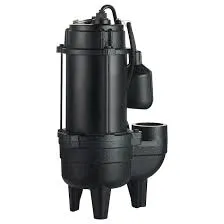Khmer
- Afrikaans
- Albanian
- Amharic
- Arabic
- Armenian
- Azerbaijani
- Basque
- Belarusian
- Bengali
- Bosnian
- Bulgarian
- Catalan
- Cebuano
- Corsican
- Croatian
- Czech
- Danish
- Dutch
- English
- Esperanto
- Estonian
- Finnish
- French
- Frisian
- Galician
- Georgian
- German
- Greek
- Gujarati
- Haitian Creole
- hausa
- hawaiian
- Hebrew
- Hindi
- Miao
- Hungarian
- Icelandic
- igbo
- Indonesian
- irish
- Italian
- Japanese
- Javanese
- Kannada
- kazakh
- Khmer
- Rwandese
- Korean
- Kurdish
- Kyrgyz
- Lao
- Latin
- Latvian
- Lithuanian
- Luxembourgish
- Macedonian
- Malgashi
- Malay
- Malayalam
- Maltese
- Maori
- Marathi
- Mongolian
- Myanmar
- Nepali
- Norwegian
- Norwegian
- Occitan
- Pashto
- Persian
- Polish
- Portuguese
- Punjabi
- Romanian
- Russian
- Samoan
- Scottish Gaelic
- Serbian
- Sesotho
- Shona
- Sindhi
- Sinhala
- Slovak
- Slovenian
- Somali
- Spanish
- Sundanese
- Swahili
- Swedish
- Tagalog
- Tajik
- Tamil
- Tatar
- Telugu
- Thai
- Turkish
- Turkmen
- Ukrainian
- Urdu
- Uighur
- Uzbek
- Vietnamese
- Welsh
- Bantu
- Yiddish
- Yoruba
- Zulu
Telephone: +86 13120555503
Email: frank@cypump.com
ធ្នូ . 11, 2024 02:31 Back to list
Efficient Solutions for Wastewater Ejection Pump Systems and Their Applications
Understanding Sewage Ejection Pumps Essential Components for Wastewater Management
Sewage ejection pumps play a crucial role in modern wastewater management systems. These mechanical devices are designed to transport sewage and wastewater from lower areas, such as basements and homes situated below the main sewer line, to higher elevations where gravity can take over. As urban development expands, a deeper understanding of these pumps becomes essential for both homeowners and professionals in the fields of plumbing and construction.
What is a Sewage Ejection Pump?
A sewage ejection pump is a type of submersible pump that is specifically designed to handle the aggressive nature of sewage. Unlike standard sump pumps, which are primarily used for clear water, sewage ejection pumps deal with effluent containing solids and a more complex mixture of materials. They are equipped with a powerful motor and a robust impeller, enabling them to chop up waste before it’s expelled through the discharge line. This efficient design is vital for preventing clogs and ensuring smooth operation.
How Does a Sewage Ejection Pump Work?
The operation of a sewage ejection pump is relatively straightforward. When wastewater accumulates in a sump basin, a float switch activates the pump. The motor begins to run, turning the impeller and sucking the sewage from the basin. The waste is then shredded and expelled through a discharge pipe, usually leading to the main sewer line. Depending on the model, these pumps can handle solids up to 2 inches in diameter, demonstrating their capability to manage a variety of waste materials.
Key Features of Sewage Ejection Pumps
1. Durability Given the harsh conditions they often encounter, sewage ejection pumps are constructed from robust materials such as cast iron or heavy-duty plastic. This durability is critical for long-term performance and minimizing maintenance needs.
2. Automatic Operation Many modern sewage pumps come with automatic float switches that allow for hands-free operation. This feature ensures that the pump only activates when needed, which helps conserve energy and reduce wear and tear.
sewage ejection pump

3. High Capacity These pumps are engineered to handle significant volumes of wastewater, making them suitable for residential applications as well as larger commercial operations. Their ability to move wastewater efficiently is crucial for preventing backups and maintaining hygiene in living and working environments.
4. Noise Reduction Advances in technology have led to the development of quieter sewage pumps, which can be essential for residential areas. Noise-reduction features ensure that the operation of the pump does not disrupt the household or the neighborhood.
When is a Sewage Ejection Pump Necessary?
Homeowners may require a sewage ejection pump when their property is located below the level of the municipal sewer line, or if the plumbing layout necessitates the movement of wastewater to a higher elevation. This is particularly common in homes with basements or lower-level bathrooms. Additionally, commercial establishments such as restaurants, hotels, and industrial facilities may need ejection pumps to manage wastewater discharges effectively.
Maintenance Tips
Maintaining a sewage ejection pump is crucial for ensuring longevity and efficient operation. Here are some practical tips
- Regular Inspection Periodically check the pump and its components for any signs of wear or damage. - Keep the Sump Clean Remove any debris that may accumulate in the sump basin to prevent clogs and ensure optimal performance. - Test the Float Switch Ensure that the float switch is functioning correctly by simulating pump activation.
Conclusion
Sewage ejection pumps are essential components in the management of wastewater, providing a reliable solution for elevating sewage to appropriate disposal levels. Their rugged design, automatic operation, and capacity for handling solids make them indispensable for both residential and commercial plumbing systems. By understanding how these pumps work and implementing proper maintenance strategies, property owners can safeguard their wastewater systems against potential issues, ensuring a clean and efficient environment. As urbanization continues to pose challenges to waste management, the role of sewage ejection pumps will remain critical in supporting sustainable living and effective infrastructure.
-
ISG Series Vertical Pipeline Pump - Chi Yuan Pumps Co., LTD.|High Efficiency, Energy Saving, Low Noise
NewsJul.30,2025
-
ISG Series Vertical Pipeline Pump- Chi Yuan Pumps|High Efficiency&Low Noise
NewsJul.30,2025
-
ISG Series Vertical Pipeline Pump-Chi Yuan Pumps Co., LTD.|High Efficiency&Energy Conservation
NewsJul.30,2025
-
ISG Series Vertical Pipeline Pump - Chi Yuan Pumps Co., LTD.|Advanced Hydraulic Design&Energy-Efficient Solutions
NewsJul.30,2025
-
ISG Series Vertical Pipeline Pump - Chi Yuan Pumps Co., LTD.
NewsJul.30,2025
-
ISG Series Vertical Pipeline Pump - Chi Yuan Pumps Co., LTD.|energy-efficient fluid handling&industrial durability
NewsJul.30,2025










